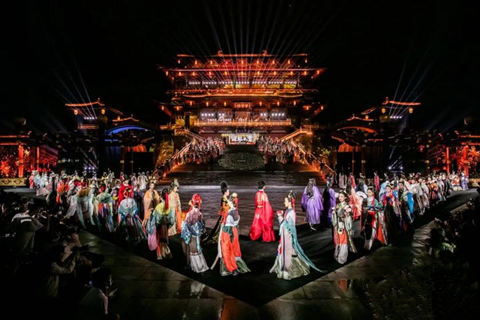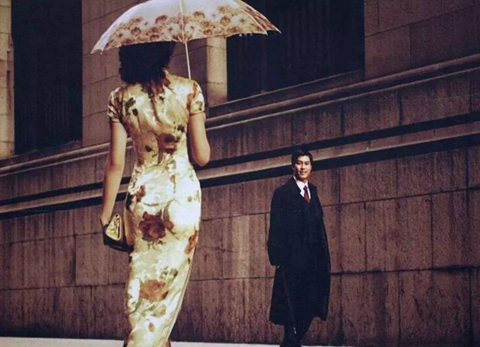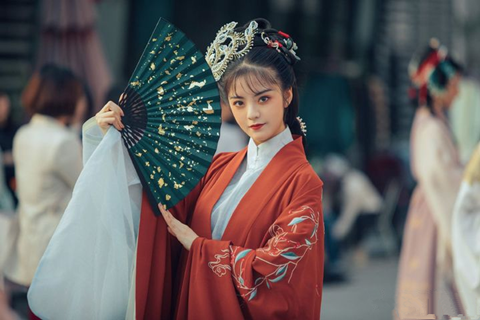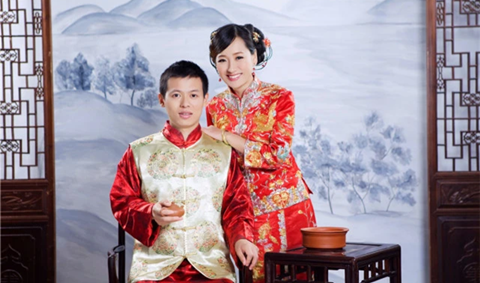Traditional Chinese Clothing - what you know
Is There More Than One Type of Traditional Chinese Clothing?
American cowboy boots, Dutch clogs, Scottish kilts, French berets – some clothing is so iconic it’s immediately recognizable. But what about Chinese sartorial traditions? Chances are the phrase “traditional Chinese clothing” may not bring anything specific to mind when you hear it, and that’s why we’re talking about it today!
Like Chinese culture, traditional Chinese garments are the products of an amalgamation of various ethnic groups. Even across different historical dynasties clothing was not always the same, and so over time arose a variety of textile designs like the cheongsam or qipao, “Hanfu”, and the “Tang suit”. Is one of these considered “the” traditional Chinese clothing outfit? First, let’s take a look at each one.

例句 (lì jù):
服饰 (fú shì): v. apparel
zhè jiā shāng diàn yǒu gè zhǒng gè yàng de fú shì.
这 家 商 店 有 各 种 各 样 的 服 饰。
This store has all kinds of apparel.
wǔ shí liù gè mín zú de fú shì gè jù fēng cǎi.
五 十 六 个 民 族 的 服 饰 各 具 风 采。
The clothing of the fifty-six ethnic groups each have their own style.
1. Cheongsam(旗袍 qí páo)
The cheongsam, also known as qipao (旗袍 qí páo), is a piece of traditional clothing worn by Chinese women, and even women of many different countries all over the world. Many people think of it as the quintessential traditional clothing item for Chinese women. Although there are still many controversies about the exact origins and specifications of the traditional cheongsam, it is one of the most splendid forms of China’s long history of textile culture.
The heyday of cheongsam was undoubtedly in the 1930s and 1940s, where it flourished among the high-class ladies and socialites of Shanghai. However, swimming, golf, flying, horseback riding, and a luxurious social life that revolved around “keeping up with times”, eventually doomed the popularity of cheongsam, as western lifestyle influence gave rise to the “improved cheongsam”, and the clothing changed from a more modest style to that of accentuating women’s body shapes, a new kind of fashion statement.
Nowadays, formal occasions like major holiday celebrations, foreign affairs visits, grand meetings, theatrical performances, and wedding banquets a range of cheongsams, from those made of high-end fabrics (such as brocade), to more demure styles (such as traditional Chinese painting or embroidered cheongsam), to those showing exquisite workmanship can all be found. Even on more informal occasions, such as family reunions, gatherings with friends, and casual outings, cheongsams with more relaxed fabrics, styles, and workmanship make an appearance.
For important ceremonies, many women choose to wear a cheongsam.

例句 (lì jù):
旗袍 (qí páo): n. cheongsam
qí páo céng jīng shì zhōng guó zuì liú xíng de fú zhuāng zhī yī.
旗 袍 曾 经 是 中 国 最 流 行 的 服 装 之 一。
The cheongsam was once one of the most popular clothing in China.
zài yǒu zhòng dà yí shì de shí hòu , xǔ duō nǚ xìng huì xuǎn zé chuān qí páo.
在 有 重 大 仪 式 的 时 候, 许 多 女 性 会 选 择 穿 旗 袍。
For important ceremonies, many women choose to wear a cheongsam.
2. Hanfu (汉服 hàn fú)
The full name for Hanfu (汉服 hàn fú) is “Han ethnic group traditional clothing”, and it’s also known as full Han clothing, Han suit, or Chinese costume. From the rise of the Yellow Emperor to the middle of the 17th century (late Ming and early Qing), the dominant “Huaxia-Han” culture gave rise to schools of thought, Chinese etiquette, and, of course, the Hanfu as part of the ethnic Han identity.
Hanfu is different from the traditional clothing and accessories system of other ethnic groups. It embodies China’s “national clothing”, “state of etiquette”, and “splendidness”. It also carries the outstanding craftsmanship and aesthetics of the Han ethnic group such as dyeing, weaving and embroidery, having inherited more than 30 Chinese intangible cultural heritage and protected Chinese arts and crafts.
At present, more and more people can be seen wearing Hanfu in China, whether for daily use or to have fun “dressing up”.

例句 (lì jù):
汉服 (hàn fú): n. Hanfu
hàn fú shì zhōng guó hàn mín zú de mín zú fú shì.
汉 服 是 中 国 汉 民 族 的 民 族 服 饰。
Hanfu is the clothing of the Han ethnic group in China.
zuì jìn chuān hàn fú de rén yuè lái yuè duō le.
最 近 穿 汉 服 的 人 越 来 越 多 了。
Recently, more and more people are wearing Hanfu.
3. Tang Suit(唐装 Táng zhuāng)
The Tang suit (唐装 Táng zhuāng) is the Han suit of the Tang Dynasty, and its designs are diverse. The traditional type consists of undergarments and skirts. This style was generally popular in the early Tang Dynasty, following the traditional upper and lower garment system of Chinese women since the Eastern Han Dynasty.
Often the blouse was worn by turning the collar on the right side or tying a knot on the front, and the undergarments were surrounded by a long skirt, with the blouse tucked inside or naturally loose. Later, during the Ming dynasty, this loose blouse came to be lengthened until it covered the knees. With the changes of the times came further adjustments to the Tang suit style, and modern Tang suits reflect western influences on fashion and design.

例句 (lì jù):
唐装 (táng zhuāng): n. Tang suit
wǒ dǎ suàn gěi zì jǐ mǎi yí jiàn táng zhuāng.
我 打 算 给 自己 买 一 件 唐 装。
I plan to buy myself a Tang suit.
táng zhuāng dài biǎo zhe zhōng guó lì shǐ fú zhuāng wén huà.
唐 装 代 表 着 中 国 历 史 服 装 文 化。
Tang suits represent Chinese historical clothing culture.
In truth, every style of clothing represents the periodic and dynastic changes in taste, customs, and preferences in Chinese history. Although years have passed and fashions have changed, clothing standards still seek to be contemporarily “beautiful”, and we’re grateful for the traditions that still survive in our clothing and influence our modern sense of style.



Comments
Post a Comment